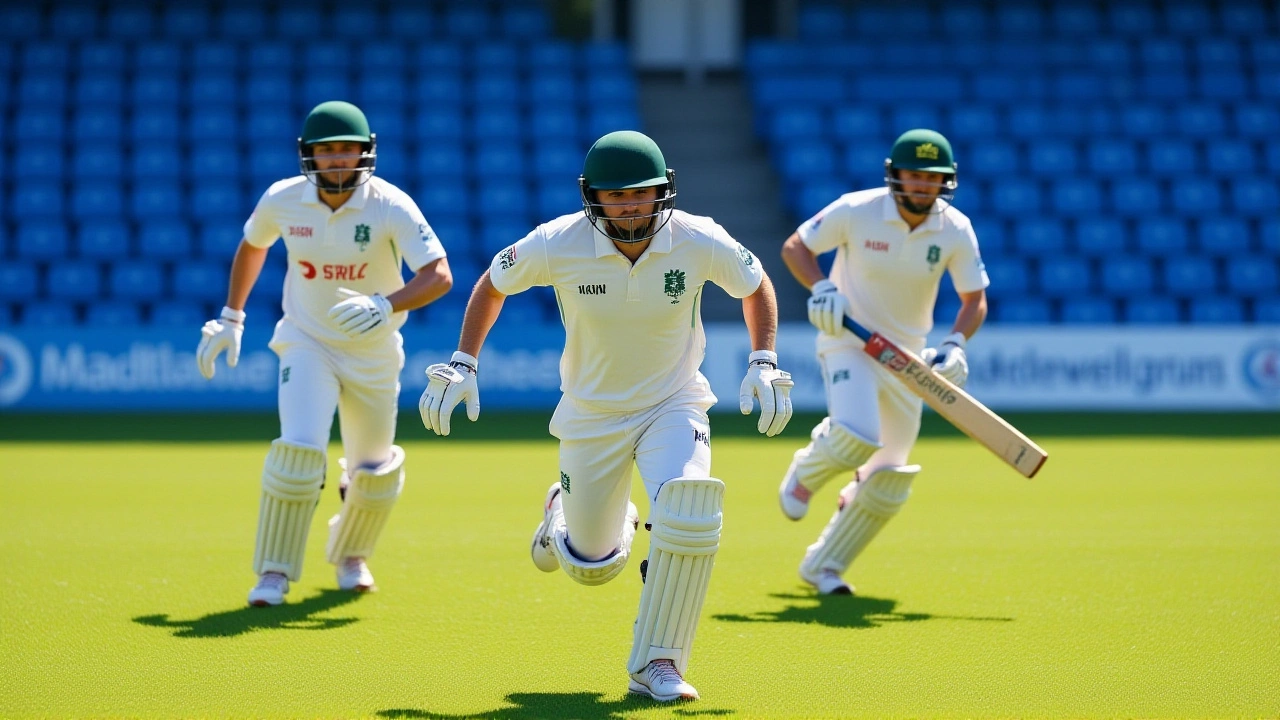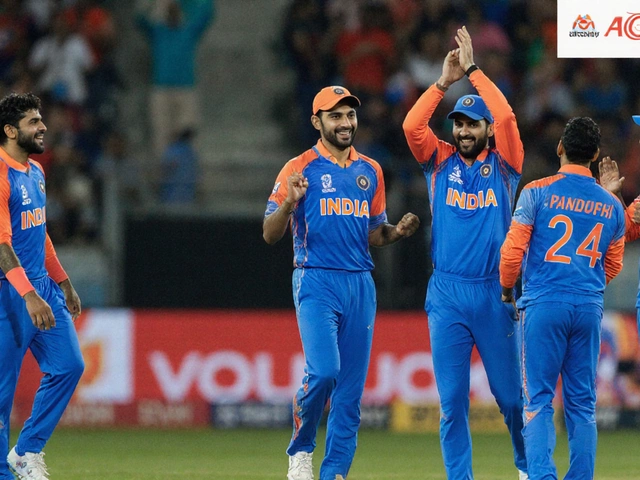On a crisp Tuesday night in Guwahati, the ICC Women's Cricket World Cup 2025 delivered a nail-biter that could define group-stage momentum. England Women chased down Bangladesh Women’s 178 with just six wickets down and four balls to spare, sealing a 4-wicket win under the lights at Barsapara Cricket Stadium. Captain Heather Knight, who guided her side through the pressure with an unbeaten 52 off 71 balls, walked away with the Man of the Match award — and a growing reputation as the quiet force behind England’s resurgence.
Strategic Bet on the Toss Pays Off
England won the toss and made the surprising call to field first — a move that raised eyebrows in the commentary box but made perfect sense in the context of the tournament. With net run rate becoming the ultimate tiebreaker in a tightly packed group, England knew a quick chase would be worth more than just two points. "They didn’t just want to win," said former England all-rounder Claire Taylor in post-match analysis. "They wanted to win fast. That’s the difference between making the semis and watching from home." Bangladesh, sent in under clear skies and a steady 24°C, never quite found rhythm. Their top order sputtered. Rubya Haider fell early for 4, caught behind by Sophia Dunkley off Lauren Bell. Sharmin Akter managed just 12 before falling to Anya Sika. The innings limped along, with spinners Marufa Akter and Fahima Khatun keeping the scoreboard ticking but never accelerating. At 49.4 overs, Bangladesh were all out — a total that looked defendable on paper but proved fragile under England’s composed chase.England’s Batting Collapse and Knight’s Calm Leadership
England’s reply started disastrously. Openers Tammy Beaumont and Amy Jones were both trapped lbw by Marufa Akter and Fahima Khatun within the first 10 overs, leaving England reeling at 29 for 2. Sophia Dunkley, looking to rebuild, was dismissed for a duck off the very next ball. The crowd fell silent. The scoreboard blinked: 29 for 3. It was the kind of moment that breaks teams. But not this one. Heather Knight walked in, not with fire, but with focus. She anchored the innings like a rock. No flamboyant shots. No risky pulls. Just accumulation — singles, twos, the occasional boundary. She shared a vital 78-run partnership with Charlie Dean, who played the perfect foil: aggressive when needed, patient when required. Dean’s 41 off 54 balls was the quiet engine of the chase. When Knight finally reached her half-century, the stadium erupted. She didn’t celebrate. Just nodded. That’s her style.Bangladesh’s Bowling Heroics, But Not Enough
Credit where it’s due: Bangladesh’s spinners were brilliant. Marufa Akter, the 22-year-old off-spinner, ripped through England’s top order with two key wickets. Fahima Khatun, her leg-spinning partner, was equally sharp, dismissing Jones and Dunkley in the same over. Their combined figures: 19 overs, 4 wickets, 52 runs. They kept Bangladesh alive. But they were left unsupported. The pace attack struggled with line and length. No bowler took more than two wickets. And when Knight and Dean took control, there was no one to stop them. "They bowled well, but we didn’t give them enough to work with," admitted Bangladesh captain Nahida Khan after the match. "We needed 220. We got 178. That’s not enough against a side like England, especially when they’re playing with purpose."Why This Win Matters More Than the Scoreline
This wasn’t just England’s second win in a row. It was their third consecutive match with a net run rate improvement. After losing their opener to Australia, England were on the brink of elimination. Now, with two wins in three games, they sit firmly in the top four. Their net run rate of +0.87 is the third best in the group — a number that could be the difference between a semifinal berth and an early exit. Meanwhile, Bangladesh’s campaign is slipping. Two losses in three matches, and their net run rate now sits at -0.92. With matches against South Africa and India looming, their path to the semis is narrowing. They showed fight — but not enough depth.
What’s Next? The Road to the Semis
England’s next fixture is against New Zealand on October 12 in Mumbai — a match that could lock them into a semifinal spot. Bangladesh face South Africa on October 14 in Delhi. Win that, and they stay alive. Lose, and their World Cup ends. The tournament’s format is brutal: every game matters. One poor performance, one slow chase, one missed opportunity — and you’re out. England aren’t just playing for wins anymore. They’re playing for margins. For every over saved. For every run added. For every decimal point in their net run rate.Key Players in the Match
- Heather Knight (England): 52* (71 balls), 1 six, 4 fours — Man of the Match
- Charlie Dean (England): 41 (54 balls) — crucial partnership builder
- Marufa Akter (Bangladesh): 2/32 in 10 overs — best bowling figures for Bangladesh
- Fahima Khatun (Bangladesh): 2/35 in 10 overs — dismantled England’s top order
- Tammy Beaumont (England): 13 (17 balls) — dismissed early, but set the tone
Frequently Asked Questions
How did net run rate influence England’s decision to field first?
England’s net run rate was at -0.12 after their opening loss to Australia. By choosing to field, they aimed to restrict Bangladesh to under 180 — a target they believed they could chase in under 48 overs. They succeeded: Bangladesh scored 178 in 49.4 overs, while England reached 182 in just 46.1 overs. This improved England’s NRR from -0.12 to +0.87, a massive swing that now puts them in control of their semifinal destiny.
Why was Heather Knight named Man of the Match despite not hitting big boundaries?
Knight’s innings was defined by control under pressure. With England at 29 for 3, her 52* came at a strike rate of 73.2 — modest, but perfectly timed. She faced 71 balls, spent over 80 minutes at the crease, and faced 12 dot balls in a row at one point to reset the momentum. In high-stakes cricket, that kind of composure is worth more than a 70-ball century. Her leadership and execution were the difference.
What impact does this result have on Bangladesh’s chances of reaching the semifinals?
Bangladesh’s chances are now slim. With two losses and a net run rate of -0.92, they need to win both remaining matches — against South Africa and India — and hope for heavy defeats by other teams in the group. Even a win against South Africa won’t be enough unless they bowl out their opponents for under 150 and chase in under 40 overs. Their bowling, while sharp, lacks the firepower to consistently restrict top-order teams.
How does this match compare to previous England-Bangladesh encounters in World Cups?
In their last World Cup meeting in 2022, England won by 121 runs — a one-sided affair. This time, Bangladesh fought harder, taking England to the brink. Knight’s win was the closest Bangladesh has ever come to beating England in a World Cup. It’s a sign of progress, but also a reminder of how far they still need to go. The gap is closing — but not yet closed.
Who are the top contenders for the semifinals after this match?
Australia and England now lead the pack with two wins each. New Zealand and South Africa are close behind with one win. India, despite a loss to Australia, still have a strong net run rate. The real battle is for third and fourth spots. England’s win has pushed them into the top three, while Bangladesh’s loss opens the door for Sri Lanka or Pakistan to sneak in — if they win their remaining games.
Why is the Barsapara Cricket Stadium significant in this tournament?
Barsapara in Guwahati has become one of the tournament’s most unpredictable venues. The pitch is slow, favoring spinners, and dew in the evening makes chasing easier — which is exactly why England chose to field. It’s also one of the few venues in India with a strong women’s cricket following, and the crowd’s energy during the final overs was described by commentators as "electric." The stadium has hosted three matches so far, and each has had a dramatic finish.





